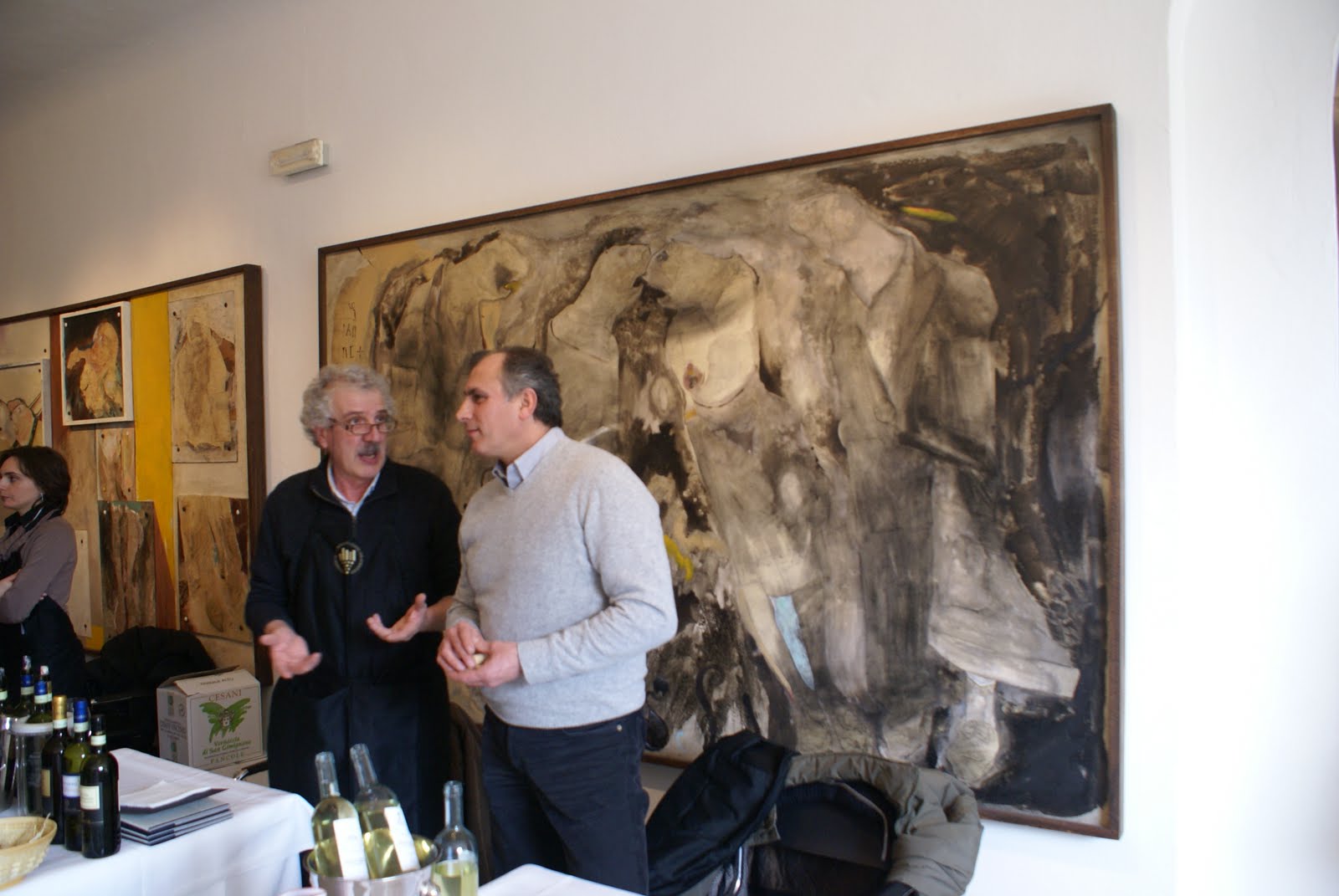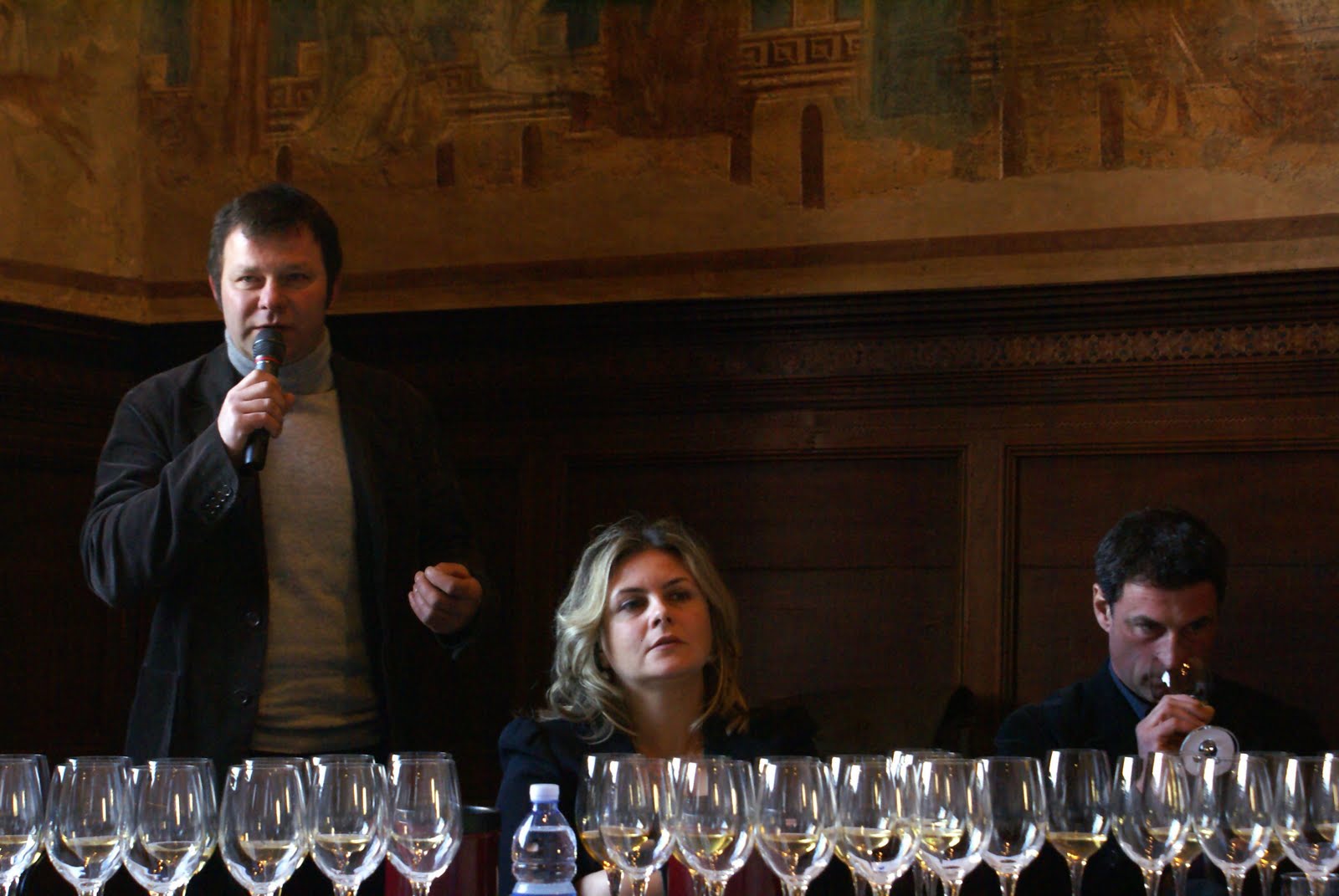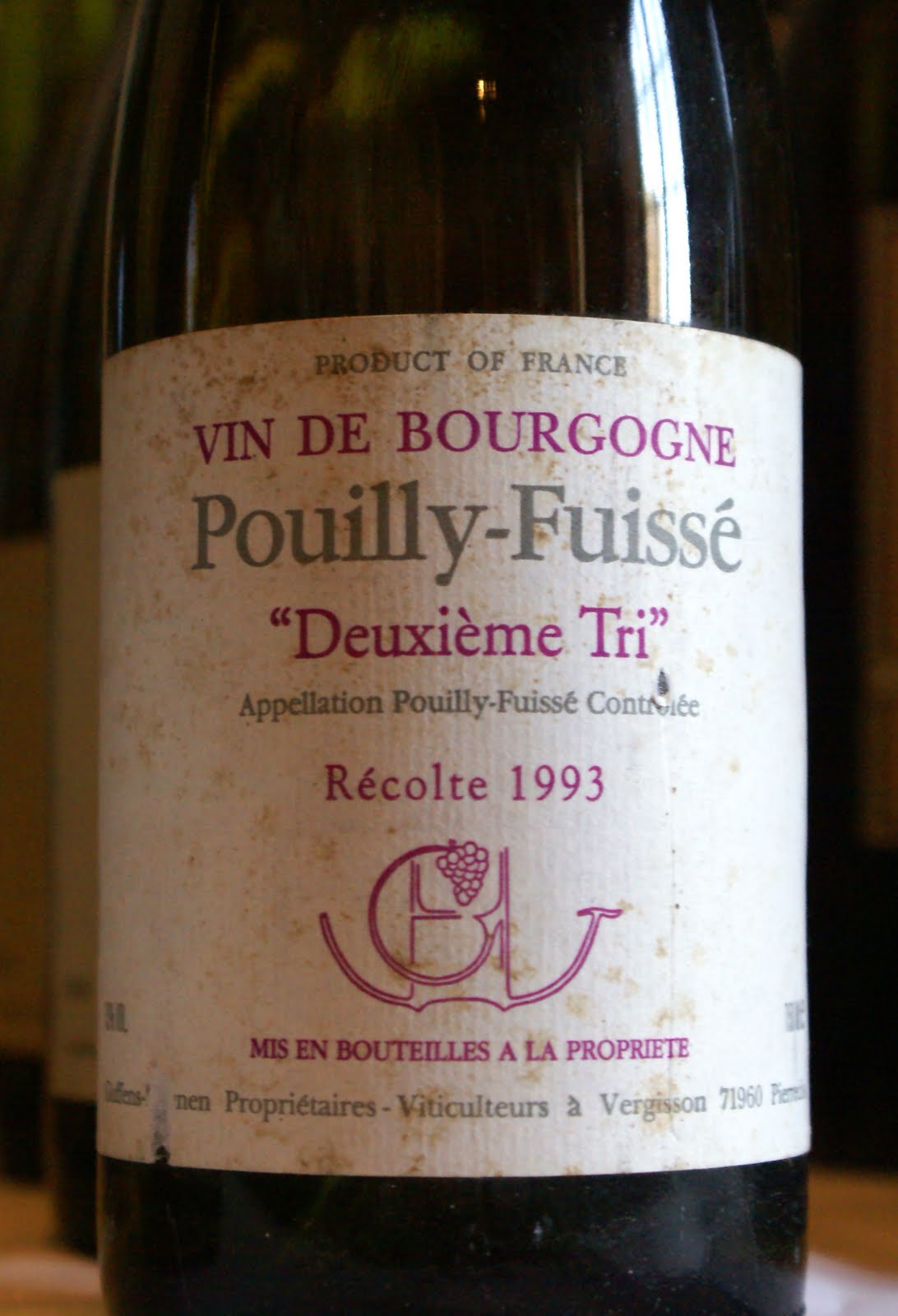Vernaccia: white Tuscany
Posted on 16 February 2010
I traditionally spend the third week of February in Tuscany, invited alongside other writers and wine buyers by the consorzios for Chianti Classico, Vino Nobile di Montepulciano and Brunello di Montalcino who make the new vintages available for tasting.
Vernaccia tasting at the modern art gallery in San Gimignano.
It’s an intense time of hectic tasting, crisp acidity and crunchy tannins. Sangiovese is a fantasting grape but it’s easy to overdose. So it’s really delightful that this year I’ve started the Tuscan immersion by the preview tasting of Vernaccia di San Gimignano, Tuscany’s premier white wine.
Vernaccia has the laudable habit of spicing up its Anteprima with a comparative tasting with a famous French wine appellation. Past editions have featured Chablis, Sancerre and Hermitage, and this year it was Pouilly-Fuissé. Such comparisons have a limited direct relevance but they’re a good occasion to taste some proper French wines (something I must do more often) and look at Vernaccia in a broader context.
The Vernaccia consorzio president Letizia Cesani with Philippe Valette
and Fabio Montrasi (of Château des Rontets).
and Fabio Montrasi (of Château des Rontets).
It was actually a brave move on Vernaccia’s side, as the comparison surely showcased some of the appellation’s inherent problems. The major one, for me, was a lack of stylistic homogeneity and a clear direction. It’s especially evident in the Riserva bottlings. New oak, used oak, large oak; oak fermentation, stainless steel fermentation, skin contact, lees contact; ageing in oak, in concrete, in bottle: I’ve tasted over 25 Riservas without quite understanding where they should be going. The best examples, such as Giovanni Panizzi’s 2002 and 2006 (see also my earlier article here), or La Lastra’s 2002 and 2001, or Mattia Barzaghi’s Cassandra 2007, are wine of compelling substance and potential, but many others are just coarse and excessive with no sense of harmony.
In the end it was a more consistent showing for the basic Vernaccias (and the odd single vineyard selection), many of which provide a happy reflection of San Gimignano’s sandy-clay terroir: unaromatic and sometimes low on fruit but with vivid salty, bitterish mineral notes on the palate, Vernaccia is one of Italy’s most distinctive white flavours. Highlights included Vincenzo Cesani, La Mormoraia, Mattia Barzaghi, and Cappella di Sant’Andrea, athough it should also be said there was a large amount of bland industrial-tasting wine that does nothing to enhance Vernaccia’s reputation.
The wine was better preserved than the label.
The Pouilly-Fuissé team was restricted to three estates, but they provided some very exciting drinking. I found Guffens-Heynen’s wines built around oak, but they’re real masterpieces of oak vinification and the Mâcon-Pierreclos 1er Jus de Chavigne 2006 is one heck of a vibrant, structured, mineral Chardonnay, and the Pouilly-Fuissé Deuxième Tri 1993 was impressively preserved for its age.
Yet in a way the more stimulating wines came from Domaine Valette, including a bold no-sulphur (there’s only 8mg added at bottling) Viré-Clessé 2006 and 2003 that was slow to open but revealed an intriguing herby-medicinal minerality and a wide panorama of salty notes; it’s really thoroughly recommended for 16€. And Château des Rontets offered three very solid bottling of Pouilly-Fuissé: the Les Birbettes, from 80-year-old vines, is extractive, deep, majestic and impressive. We were surely looking at the elite of Pouilly-Fuissé but they surely showed a level of consistency, concentration and depth that is beyond the reach of Vernaccia di San Gimignano, for the moment. Reasons? I’d identify a long consolidated tradition of wine production in Burgundy, but also a stronger emphasis on vineyard management, and importantly, yields: yields are always relative and should be taken with a grain of salt but a Vernaccia producer is happy to produce 50-60hl/ha with a planting density of 4–5000 vines/ha while the Burgundian standard at 10K vines/ha is closer to 30–40hl. That’s three times less than in Tuscany.
This trip to Tuscany
(flights, hotels, meals and transfers) was paid for by the consorzios of
Vernaccia di San Gimignano, Chianti Classico, Vino Nobile di Montepulciano and
Brunello di Montalcino.
This trip to Tuscany
(flights, hotels, meals and transfers) was paid for by the consorzios of
Vernaccia di San Gimignano, Chianti Classico, Vino Nobile di Montepulciano and
Brunello di Montalcino.




